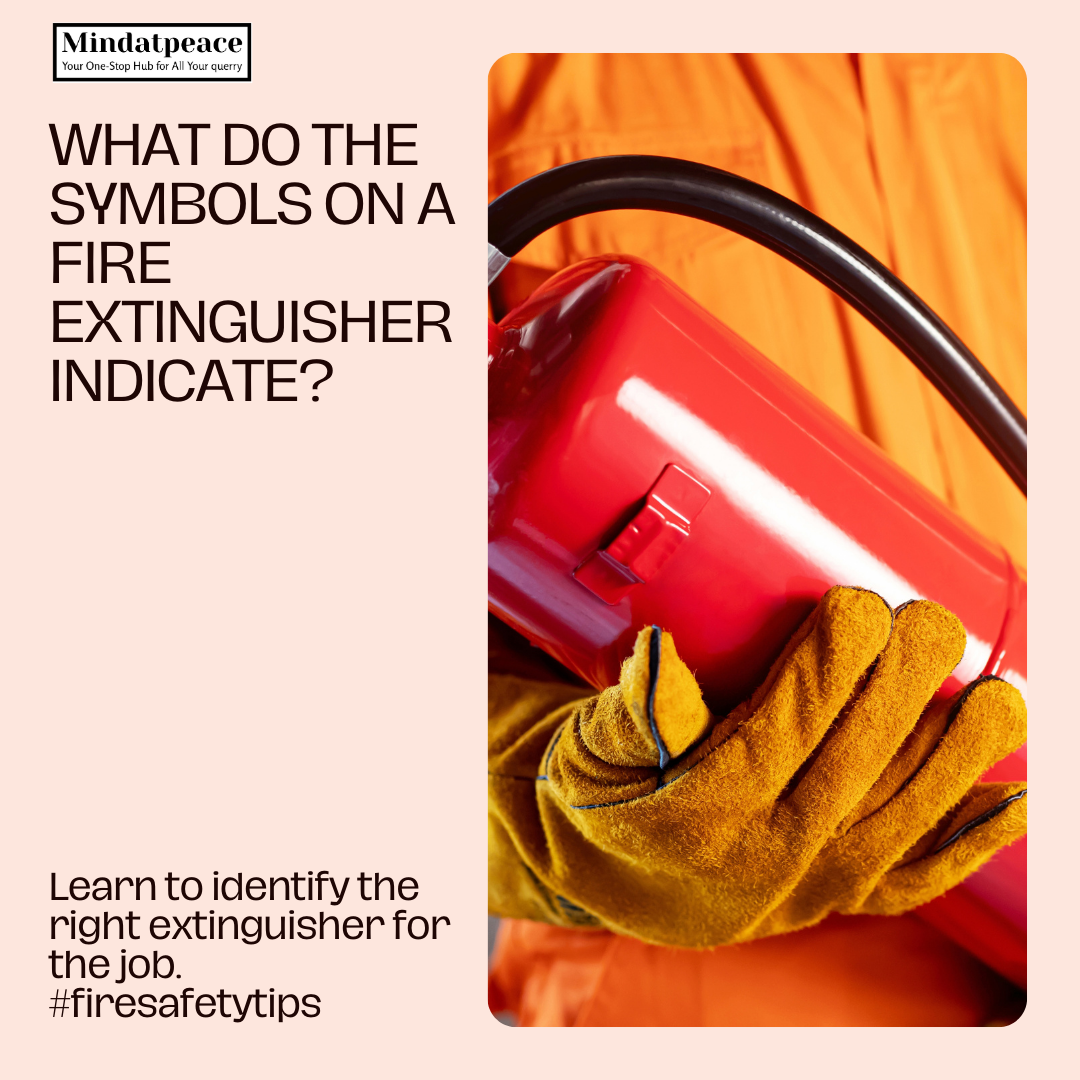Fire extinguishers are vital tools for fire safety, but understanding the symbols on them is equally important. These symbols convey crucial information about the type of fires they can extinguish and how to use them effectively. In this article, what do the Symbols on a Fire Extinguisher Indicate, we will delve into the meaning behind the symbols found on fire extinguishers and why it’s essential to comprehend them for effective fire prevention and response.
Introduction to Fire Extinguisher Symbols
Fire extinguisher symbols are standardized across the industry to ensure universal understanding. They consist of various shapes, colors, and letters, each representing specific information about the extinguisher’s capabilities and usage.
Understanding Fire Extinguisher Labeling
Before interpreting the symbols, it’s essential to understand how fire extinguishers are labeled. The labels typically include the type of fire the extinguisher is suitable for, along with other pertinent details such as its weight, expiration date, and maintenance instructions.
Interpretation of Fire Extinguisher Symbols
- Class A Fire: This symbol indicates that the fire extinguisher is effective against ordinary combustibles like wood, paper, and cloth.
- Class B Fire: The symbol for Class B fires signifies that the extinguisher is suitable for flammable liquids such as gasoline, oil, and grease.
- Class C Fire: When you see this symbol, it means the extinguisher is safe to use on electrical fires.
- Class D Fire: This symbol indicates that the extinguisher is designed for combustible metals like magnesium and titanium.
- Class K Fire: Class K extinguishers are intended for kitchen fires involving cooking oils and fats.
Pictograms
Pictograms on fire extinguishers are symbols that convey important information about the extinguisher’s contents and usage. They include:
Fire symbol: Indicates the extinguisher is for fighting fires.
Class designation: Shows which types of fires the extinguisher can handle (e.g., A, B, C).
Directional arrows: Guide users on how to operate the extinguisher.
Warnings and precautions: Alerts users to safety measures and hazards.
Environmental information: Indicates environmental impact or safety.
Maintenance symbols: Reminds users about inspection and upkeep requirements.
Extinguishing Agent Symbols
Water: Droplet icon for Class A fires.
Foam: Foam-filled square for Class A and B fires.
Dry Chemical: Powder-filled circle/square for Class A, B, and C fires.
Carbon Dioxide (CO2): Black cylinder with snowflake for Class B and C fires.
Wet Chemical: Cooking pot/skillet symbol for Class K fires.
Clean Agent: Green “C” inside a triangle for Class A, B, and C fires.
Color Codes and Symbols
1. Color Codes:
Red: Typically, fire extinguishers are primarily red in color, making them easily visible in emergency situations.
Some Exceptions : However, certain types of extinguishers, such as those containing Halon or clean agents, might have different colors like green or blue.
2. Symbols:
Pictograms: Common symbols on fire extinguishers include:
Flame: Indicates the extinguisher is designed for fighting fires.
Letters/Numbers: Denote the class of fires the extinguisher is suitable for (e.g., A, B, C, D, K).
Directional Arrows: Guide users on how to activate and operate the extinguisher.
Environmental Symbols: Highlight any environmental concerns or impact related to the extinguishing agent.
Maintenance Symbols: Remind users of inspection and maintenance requirements.
Meaning of Arrows and Text
Arrows on fire extinguisher symbols indicate the direction to operate the extinguisher, ensuring proper usage during emergencies. Text labels may provide additional instructions or warnings, such as “Pull Pin” or “Aim at Base of Fire.”
Placement and Visibility of Symbols
Fire extinguisher symbols must be prominently displayed and easily visible in case of emergencies. They are usually located near exits and in areas prone to fire hazards for quick access and identification.
Importance of Knowing Fire Extinguisher Symbols
Understanding fire extinguisher symbols can mean the difference between effectively combating a fire and exacerbating the situation. It empowers individuals to make informed decisions during emergencies, potentially saving lives and property.
Safety Tips for Using Fire Extinguishers
- Familiarize yourself with the location of fire extinguishers in your home or workplace.
- Read the instructions on the extinguisher label before attempting to use it.
- Use the PASS method: Pull the pin, Aim at the base of the fire, Squeeze the handle, and Sweep from side to side.
- Call emergency services immediately, even after successfully extinguishing a fire.
Conclusion
Fire extinguisher symbols are invaluable guides that provide critical information during emergencies. By understanding these symbols and following safety protocols, individuals can effectively respond to fires and mitigate potential damage. Stay informed, stay safe with MindatPeace. Explore our comprehensive guide on What do the Symbols on a Fire Extinguisher Indicate to enhance your fire safety knowledge.
FAQs (Frequently Asked Questions)
Q. What does a green triangle on a fire extinguisher mean?
A. A green triangle typically indicates that the extinguisher is safe for use on Class A fires, which involve ordinary combustibles like wood and paper.
Q. What does a red square on a fire extinguisher signify?
A. A red square often indicates a fire extinguisher suitable for Class B fires, which involve flammable liquids such as gasoline and oil.
Q. What does the letter “C” on a fire extinguisher mean?
A. The letter “C” signifies that the extinguisher is safe to use on electrical fires, such as those involving appliances or wiring.
Q. Can I use a Class A fire extinguisher on a Class B fire?
A. It is not recommended to use a Class A extinguisher on a Class B fire, as it may not effectively extinguish the flames and could potentially worsen the situation.
Q. How often should fire extinguishers be inspected?
A. Fire extinguishers should be inspected at least once a year by a certified professional to ensure they are in proper working condition.


